Potrebujeme váš súhlas na využitie jednotlivých dát, aby sa vám okrem iného mohli ukazovať informácie týkajúce sa vašich záujmov. Súhlas udelíte kliknutím na tlačidlo „OK“.
ASTM D5283-92(2009)
Standard Practice for Generation of Environmental Data Related to Waste Management Activities: Quality Assurance and Quality Control Planning and Implementation
Automaticky preložený názov:
Štandardná prax pre výrobu ekologickej údajov týkajúcich sa nakladania s odpadmi: Zaistenie a kontrola kvality plánovania kvality a implementácie
NORMA vydaná dňa 1.2.2009
Informácie o norme:
Označenie normy: ASTM D5283-92(2009)
Poznámka: NEPLATNÁ
Dátum vydania normy: 1.2.2009
Kód tovaru: NS-30580
Počet strán: 18
Približná hmotnosť: 54 g (0.12 libier)
Krajina: Americká technická norma
Kategória: Technické normy ASTM
Kategórie - podobné normy:
Anotácia textu normy ASTM D5283-92(2009) :
Keywords:
environment, waste management, quality assurance, quality control, Data analysis--environmental, Data quality objectives (DQO), Environmental control/fate--waste, Field testing--waste treatment, Quality assurance (QA)--environmental, Quality control (QC), Sampling waste materials/applications, Waste materials/processing/analysis, ICS Number Code 03.120.10 (Quality management and quality assurance), 13.030.01 (Wastes in general)
Doplňujúce informácie
| Significance and Use | ||||||||
|
Environmental data are often required for making regulatory and programmatic decisions. These data must be of known quality commensurate with their intended use. Data generation efforts involve the following: establishment of the DQOs; design of the project plan to meet the DQOs; implementation of the project plan; and assessment of the data to determine whether the DQOs have been met. Certain minimal criteria must be met by the field and laboratory organizations generating environmental data. Additional activities may be required based on the DQOs of the data collection effort. This practice defines the criteria for field and laboratory organizations generating environmental data and identifies some other activities that may be required based on the DQOs. This practice emphasizes the importance of communication among those involved in establishing DQOs, planning and implementing the sampling and analysis aspects of environmental data generation activities, and assessing data quality. Environmental field operations are discussed in Section 7, and environmental laboratory operations are discussed in Section 8. |
||||||||
| 1. Scope | ||||||||
|
1.1 Environmental data generation efforts are composed of four parts: (1) establishment of data quality objectives (DQOs); (2) design of field measurement and sampling strategies and specification of laboratory analyses and data acceptance criteria; (3) implementation of sampling and analysis strategies; and (4) data quality assessment. This practice addresses the planning and implementation of the sampling and analysis aspects of environmental data generation activities (Parts (1) and (2) above). 1.2 This practice defines the criteria that must be considered to assure the quality of the field and analytical aspects of environmental data generation activities. Environmental data include, but are not limited to, the results from analyses of samples of air, soil, water, biota, waste, or any combinations thereof. 1.3 DQOs should be adopted prior to application of this practice. Data generated in accordance with this practice are subject to a final assessment to determine whether the DQOs were met. For example, many screening activities do not require all of the mandatory quality assurance (QA) and quality control (QC) steps found in this practice to generate data adequate to meet the project DQOs. The extent to which all of the requirements must be met remains a matter of technical judgement as it relates to the established DQOs. 1.4 This practice presents extensive management requirements designed to ensure high-quality environmental data. The words “must,”“ shall,” “may,” and “should” have been selected carefully to reflect the importance placed on many of the statements made in this practice. 1.5 This standard does not purport to address all of the safety concerns, if any, associated with its use. It is the responsibility of the user of this standard to establish appropriate safety and health practices and determine the applicability of regulatory limitations prior to use. Note 1—A complete table of contents of this practice is given in Appendix X1. |
||||||||
| 2. Referenced Documents | ||||||||
|
Podobné normy:
Historická
15.6.2009
Historická
1.1.2008
Historická
1.4.2013
Historická
1.4.2013
Historická
1.11.2013
Historická
1.3.2013
Odporúčame:
Aktualizácia technických noriem
Chcete mať istotu, že používate len platné technické normy?
Ponúkame Vám riešenie, ktoré Vám zaistí mesačný prehľad o aktuálnosti noriem, ktoré používate.
Chcete vedieť viac informácií ? Pozrite sa na túto stránku.


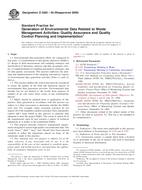
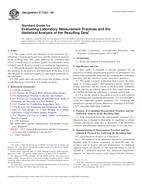 ASTM E1323-09
ASTM E1323-09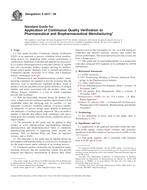 ASTM E2537-08
ASTM E2537-08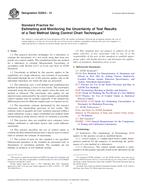 ASTM E2554-13
ASTM E2554-13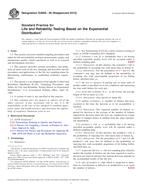 ASTM E2696-09(2013)..
ASTM E2696-09(2013)..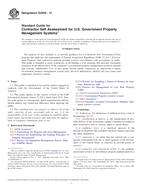 ASTM E2936-13
ASTM E2936-13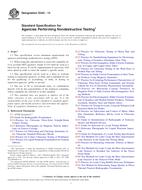 ASTM E543-13
ASTM E543-13
 Cookies
Cookies
